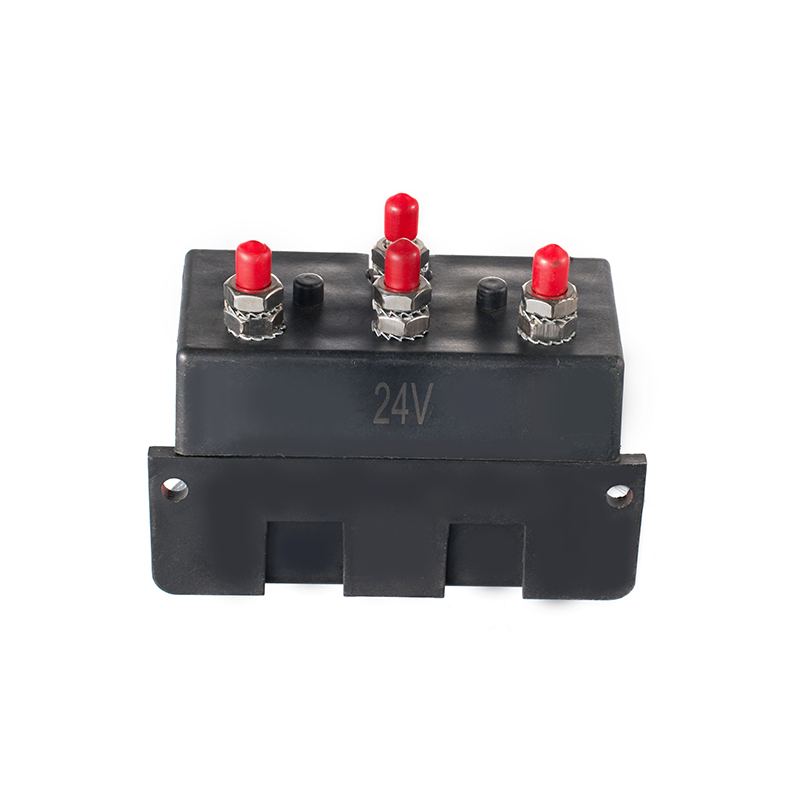- Tel: +86-13385878168
- E-mail: [email protected]
- Please contact us if you have questions.

Web Menu
Product Search

Understanding the Current and Voltage Handling Capabilities of a Winch Relay
Power delivery is a critical component in winch systems, especially when operating under high loads or challenging environments. At the center of that electrical control lies the Winch Relay, a compact yet essential device responsible for switching large currents to drive the winch motor. For the winch system to function reliably and safely, understanding the current and voltage handling capabilities of the relay is essential.

Key role in power management
The primary role of a winch relay is to act as a high-current switch that can handle the demanding electrical requirements of winch motors. These motors often draw significant current, especially under load or during start-up. Unlike standard relays used in light-duty applications, relays designed for winches must endure much higher amperage while maintaining consistent performance over time.
Typical current ratings
Winch relays are commonly rated in the range of 200 to 500 amps for continuous duty, with peak or surge ratings that may exceed 600 amps. The actual current handling capability depends on the design of the relay, the materials used in the contact points, and the intended duty cycle. For example, a 12V DC winch system pulling a heavy vehicle out of mud might require over 400 amps momentarily. The relay must not only withstand that current but also operate without welding the contacts or generating excessive heat.
Voltage handling capacity
In most off-road and utility vehicle applications, winch relays are built for 12V or 24V DC systems, which are standard for automotive and marine electrical systems. The relay must be able to open and close the circuit safely at these voltages without arc damage or insulation breakdown. High-voltage insulation properties and appropriate spacing between terminals help maintain safe and efficient operation even under challenging environmental conditions like moisture or vibration.
Heat dissipation and material considerations
Handling large amounts of current inevitably produces heat. High-quality winch relays use copper alloy contacts with silver plating or other conductive coatings to decrease resistance and arc wear. Heat-resistant plastic casings, integrated heat sinks, or thermal cutoffs are also common in premium designs to prevent overheating. If the relay is not rated correctly for the expected current, it may fail prematurely or pose a safety hazard.
Duty cycle and load profiles
Another important factor when evaluating a winch relay is the duty cycle it supports. Some relays are rated for intermittent use, which means they can only carry peak current for a short time before requiring a cooldown period. Others are built for continuous duty and can remain energized longer without performance degradation. Understanding the specific demands of the application, such as recovery winches that operate in bursts vs. industrial winches that may run steadily, is essential when selecting a suitable relay.
Matching with motor and battery system
To ensure suitable performance and safety, the winch relay should be matched not only to the motor specifications but also to the battery and wiring system. Undersized relays can become a bottleneck, causing voltage drops and limiting the power delivered to the motor. Conversely, over-specifying the relay may unnecessarily increase cost without a performance benefit. A well-balanced system ensures longevity and responsiveness in critical moments.
In summary, the ability of a winch relay to handle high current and voltage loads is central to the functionality of any powered winch system. Whether for off-road recovery, marine use, or industrial lifting, choosing a relay with appropriate electrical ratings ensures efficient operation, system protection, and reliable performance under pressure.
Related Products
Request for a call today
-
-
Romy
-
Phone: +86-13385878168
-
WhatsApp: +8613385878168
-
Email: [email protected]
-
-
-
Clark
-
Phone: +86-15397359100
-
Email: [email protected]
-
-
-
Pinky
-
Phone: +86-15305875100
-
Email: [email protected]
-
- Mobile Terminal


 English
English Español
Español













